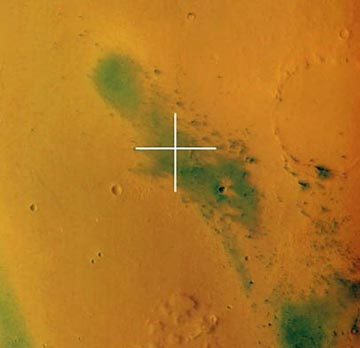"Certainly like the green in the Gusev crater picture or by looking at the development of darker spots toward the South Pole which are tied to seasonal variations, it certainly gives rise to the speculation that there could be algae."
- Michael McKay, European Space Agency

January 31, 2004 Darmstadt, Germany - The European Space Agency's Mars Express Orbiter has been exploring the red planet from 186 miles (300 kilometers) altitude. Its high resolution stereo camera has been sending back extraordinary color images. Some, like the Gusev crater image above, show green areas. Some like the Reull Vallis ancient river channel below show blue and blue-green regions.
Click here to subscribe and get instant access to read this report.
Click here to check your existing subscription status.
Existing members, login below:
© 1998 - 2024 by Linda Moulton Howe.
All Rights Reserved.

